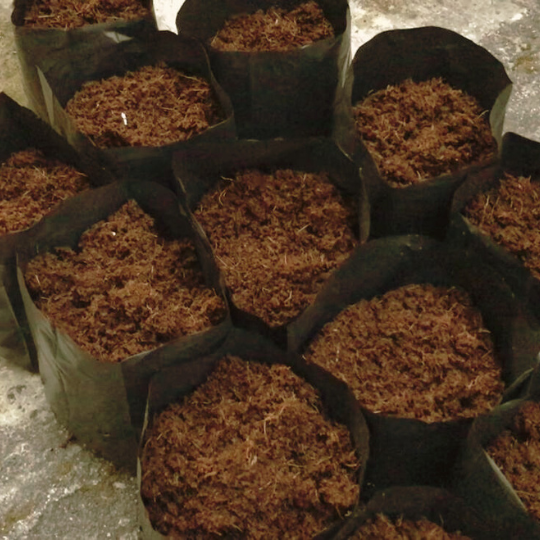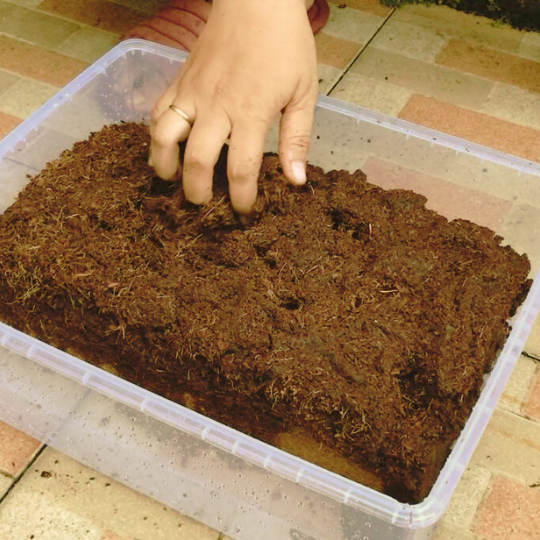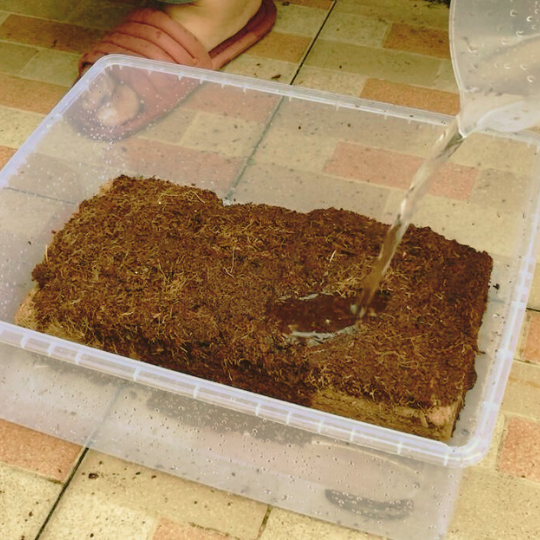Coir peat brick how to use? Unsure how to make the most of your coco husk peat brick? Whether you’re a gardening novice or a seasoned pro, understanding how to use coir peat bricks effectively can be a game-changer. From enriching soil quality to promoting healthy plant growth, these bricks offer a sustainable alternative to traditional soil amendments. Discover the simple steps to unlock the full potential of coir peat bricks and witness the remarkable difference in your garden’s vitality and productivity. Say goodbye to messy soil bags and hello to the convenience and eco-friendliness of coir peat bricks made from coconut husk fibres today.

Understanding Coir Peat Bricks
What is Coir Peat
Coir peat, also known as coco peat or coconut coir, is a natural fibre extracted from the husk of coconuts. It is processed into compact bricks for gardening and horticultural use using coco coir, coconut husk fibres, and coco peat soil.
Coir peat bricks are created by compressing the coconut coir fibres into a dense block, making them convenient and easy to handle for various gardening applications.
Key Properties and Benefits
- Lightweight: Coir peat bricks are lightweight, making them easy to transport and handle.
- Water Retention: They have excellent water retention properties, ensuring optimal moisture levels for plant growth.
- Aeration: These bricks provide good aeration to plant roots, promoting healthy root development.
- Biodegradable: Being organic, coir peat bricks are biodegradable and environmentally friendly.
Environmental Advantages
- Sustainable Sourcing: Coconut coir is a renewable resource, sourced from coconut husks that would otherwise be discarded.
- Reduced Waste: The production of coir peat bricks helps in reducing waste by utilizing a by-product of the coconut industry.
- Eco-friendly: Using coir peat bricks contributes to sustainable gardening practices, minimising environmental impact.

Preparing Coir Peat for Use
Breaking Down the Brick
To start, break down the coir peat brick by submerging it in a container filled with water. Allow it to absorb water for at least 30 minutes.
Next, loosen the expanded coir peat by breaking it apart with your hands. Ensure all parts are evenly moistened before use.
Rehydrating Techniques
For faster rehydration, use warm water instead of cold. This helps the coir peat to absorb moisture more quickly and efficiently. After soaking, squeeze out any excess water from the coir peat. This ensures that it is at the optimal moisture level for gardening use.
Mixing with Soil
When mixing coco coir peat with soil, blend them thoroughly in a ratio of 1:1 or as required by your plants’ needs.
Incorporate fertilizers or compost into the mixture for added nutrients. This enhances the soil structure and promotes healthy plant growth.
Applications in Gardening
Container Gardening Tips
Container gardening with coir peat brick is ideal for small spaces, balconies, or indoor settings. Its lightweight nature makes it easy to move around. The coir peatretains moisture well, ensuring your plants stay hydrated without frequent watering. It also provides excellent aeration for healthy root growth.
- Lightweight and easy to move
- Retains moisture efficiently
- Provides good aeration for roots
Organic Gardening Uses
In organic gardening, coco coir peat serves as an excellent alternative to traditional peat. It’s eco-friendly, renewable, and helps reduce the environmental impact of gardening practices. Its ability to retain moisture and nutrients benefits plants while promoting sustainable cultivation methods.
- Eco-friendly and renewable
- Reduces environmental impact
- Retains moisture and nutrients effectively
Hydroponic Systems Guide
Hydroponic systems benefit from coir peat due to its excellent water retention capabilities. When used as a growing medium, coir peat ensures optimal moisture levels for plants without the risk of waterlogging. It promotes healthy root development and enhances nutrient uptake in hydroponic setups.
- Excellent water retention properties
- Prevents waterlogging
- Promotes healthy root growth
Composting with Coir
Coir peat, also known as coco, is a valuable addition to compost piles, aiding in the decomposition process by balancing carbon and nitrogen levels. Its fibrous texture, like coco coir or coco peat, improves aeration within the compost, facilitating the breakdown of organic matter. Incorporating coir peat enriches the compost with essential nutrients for healthier soil.
- Balances carbon and nitrogen levels
- Improves aeration in compost
- Enriches compost with essential nutrients

Using Coir for Indoor Plants
Benefits for Houseplants
Coir, derived from coconut husks, benefits indoor plants by retaining moisture and promoting aeration, crucial for plant health. Its natural resistance to mold and pests makes it an ideal choice for indoor gardening. The coir bedding, also known as coco peat, provides excellent drainage, preventing root rot in houseplants.
- Retains moisture
- Promotes aeration
- Resistant to mold and pests
Growing Substrate for Succulents
When used as a growing substrate for succulents, regular coco coir helps maintain the optimal moisture level required by these plants. The well-draining nature of coco peat, also known as coir, prevents waterlogging, reducing the risk of root diseases in succulents. Its lightweight and airy texture create a conducive environment for healthy succulent growth.
- Maintains optimal moisture level
- Prevents waterlogging
- Lightweight and airy texture
Watering Considerations
For indoor plants potted in coco peat coir mat, it’s essential to adjust watering frequency due to coir’s water retention properties. Regularly check the soil moisture to avoid overwatering, which can lead to root suffocation. Adjust watering schedules based on plant needs and environmental conditions to ensure thriving indoor greenery.
- Adjust watering frequency
- Check soil moisture regularly
- Avoid overwatering
Incorporating coir peat bricks into your gardening routine can be a game-changer. From enriching soil quality to promoting healthy plant growth, the versatility of coir knows no bounds. Whether you’re a seasoned gardener or just starting, the simplicity and effectiveness of coir peat make it a must-have in your gardening arsenal.
Next time you’re tending to your garden or nurturing your indoor plants, remember the benefits that coir peat can bring. Give it a try and witness firsthand the wonders it can do for your green companions. Your plants will thank you for the nutrient-rich environment you provide them with. Happy gardening!
Frequently Asked Questions
How are Coir Peat Bricks made?
Coir peat bricks are made from coconut husks, processed to remove fibres and pith. The material is compressed into brick form for easy handling and storage.
How do I prepare Coir Peat for use in gardening?
To prepare coir peat, soak the brick in water until it expands, then fluff it up. It’s now ready to be mixed with soil or used as a growing medium.
What are the applications of Coir Peat in gardening?
Coir peat is versatile, used for seed starting, improving soil structure, moisture retention, and a sustainable alternative to peat moss.
Can I use Coir for indoor plants?
Yes, coir is excellent for indoor plants due to its moisture retention properties, aeration benefits, and being lightweight compared to traditional soil mixes.
Is Coir Peat eco-friendly?
Absolutely! Coir peat is a sustainable and renewable resource, reducing the environmental impact compared to other soil amendments.
In conclusion, if you are eager to delve deeper into the details of coir products, feel free to explore our website at https://cocopeatcocofiberaustralia.com/. Additionally, for direct and instant connection with our team, you can reach us through the following WhatsApp link https://wa.me/61412773364. We look forward to providing you with the information and assistance you need.
